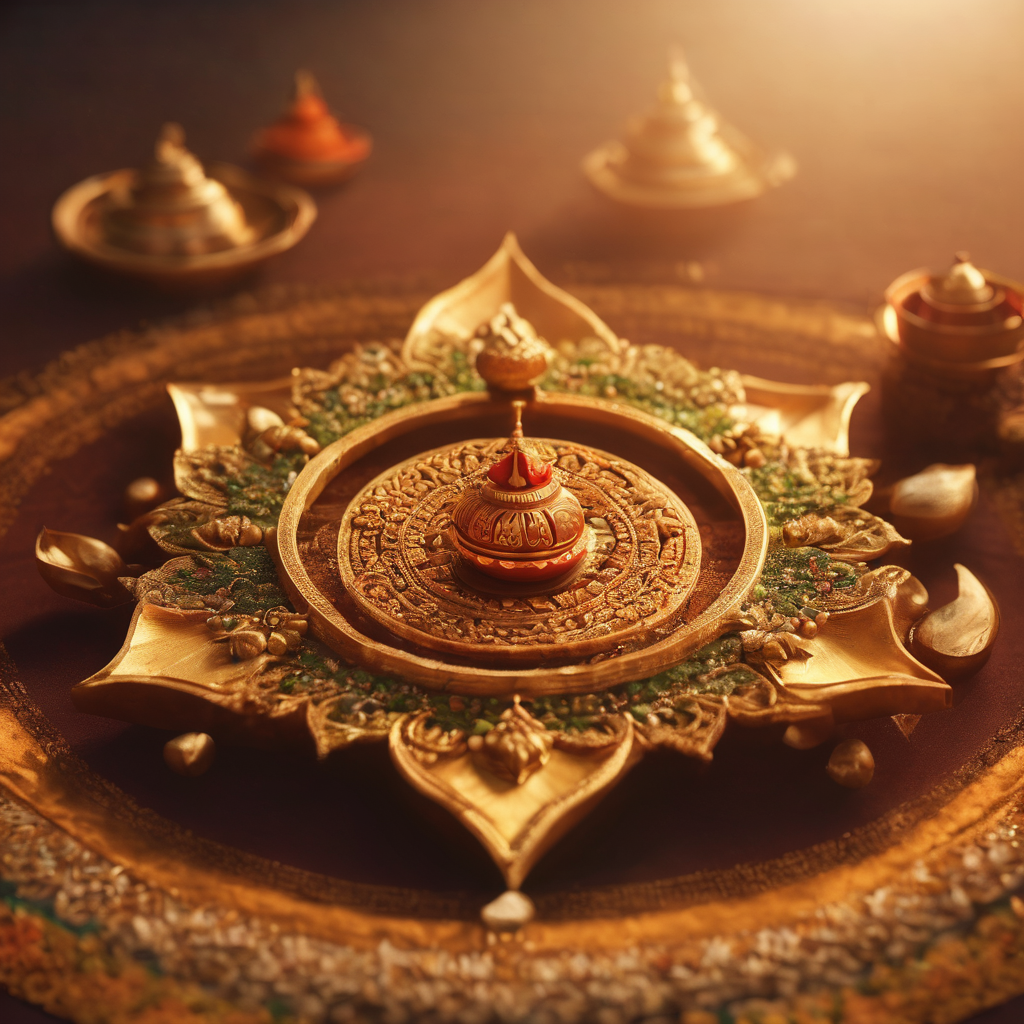Vibrating in colours that light up the dark skies, is how I would describe the celebration of Diwali –the festival of lights, which brings together all sorts of traditions and rituals. This is a period that brings together individuals of different nationalities, languages, and religions, in celebrating the triumph of light over the dark and the victory of goodness over malice. The many facets of Diwali’s traditions and rituals reveal different aspects of Indian multiculturalism, society, and religion. Let us explore the traditions and ceremonies that give Diwali its distinction from other festivals.
Rangoli: The Artistic Welcome

One of the best known visual components in celebration of Diwali is a style called rangoli. It entails splattering different colors of powdered sand, or rice into intricate patterns as colorful and beautiful as possible on the ground. rangoli is more than an interior design, it has a purpose of calling in gods and friends home. These patterns usually have flowers, geometric figures or signs of wealth and success.
The Lighting of Diyas: A Symbol of Hope
The most important tradition is that of lightening oil lamps referred as diyas. Dias signify the overcoming of darkness by light and the conquest of evil on behalf of good. The Hindus have a believe that they attract Lakshmi, the goddess of wealth and prosperity into their homes during this festival season. Diyas are put up at entrance gates, windows and all over the house to give the place a cozy feeling.
Lakshmi Puja: Seeking Prosperity and Blessings
One of the major customs of Diwali is Lakshmi Puja. It is performed to appease Goddess Lakshmi and to request her blessings for wealth and prosperity in a future year. Special prayer is performed where every family offers flowers, sweets, and incense to the Goddess on this occasion. Symbolizing wealth, a silver coin or gold objects are placed at the feet of the goddess Lakshmi.
Feasting: A Culinary Extravaganza
Diwali is synonymous with feasting. The families prepare a variety of delicacies ranging from sweet to savoury foods to celebrate the event. Samosas and pakoras form part of a rich variety of savoury snacks that form part of celebrations on traditional Diwali sweets including ladoos, jalebis and gulab jamuns. It is during the feasts that friends and family meet in order to partake of delicious meals.
Exchanging Gifts

The exchange of gifts is one of the sacred traditions of Diwali, which enhances relations with others and shows affection and friendship. Individuals give one another candies, nuts, and other considerate presents such as nuts to friends, relatives, and neighbours.
New Clothes: Symbol of Fresh Beginnings
During Diwali it is a tradition for people to put on new clothes symbolising the beginning of a new lease and letting go of the past. People wear colorful fashionable clothes which symbolise their wish for better life and growth. People wear new clothes to visit temples and during social events.
Fireworks

The use of fireworks in a celebration is a symbol of light overcoming the darkness. Shining glamorous and glowing fireworks makes the dark night so alive on festive occasions. Fireworks are a traditional part of the festival, standing for celebration, enthusiasm and happiness.
Family Time

Families converge and become united during Diwali. Family members usually visit each other, give out presents and celebrate together on that occasion. Sharing the happiness and togetherness during Diwali creates memorable moments as well as feeling one with others.
Charity and Giving
Charity and gift giving form a cornerstone in the Diwali tradition. Several people and their families give the needy food and clothes as well as money for charity purposes. The kindness, mercy are regarded as mandatory for this period.
A Cracker-Free Diwali
It is important to note that for some time now there are increased concerns regarding the environmentally friendly impacts of fireworks. The air and noise pollution due to fireworks results in some communities and individuals celebrating a cracker-free or eco-friendly Diwali. This indicates an increased awareness about environmental protection.
Region-Specific Traditions
Many Diwali traditions are observed widely in India but some regional practices help enrich the significance of the festival. For example:
- It’s common in Uttar Pradesh’s northern part where Diwali signifies Lord Ram’s return to his home. Such as diya lighting and making the most beautiful rangoli patterns.
- The celebration of Kali puja coinciding with Diwali in West Bengal is also a popular practice.
- People in the southern state of Tamil Nadu exchange the sugarcane on this day while they light up the earthen oil lamps.
- Western Gujarat celebrates the festival by worshipping Goddess Laxmi and breaking pots of curds and buttermilk.
There are many festivals among which there is this one called Diwali that celebrates different kinds of peoples irrespective of their religion or belief. It is a kaleidoscope of its rich, colourful customs and traditions reflecting a hope, a light and a common ground for all. The richness of colours in rangolis to the glow of lights from diyas to the delight of sharing food and exchanging presents, all these describe the spirit of Diwali.
Just before Diwali comes around once again, it reminds us about the diversity of Indian culture and religion, which is for all countries as the eternal joy and victory meaning which Diwali has throughout the universe.

